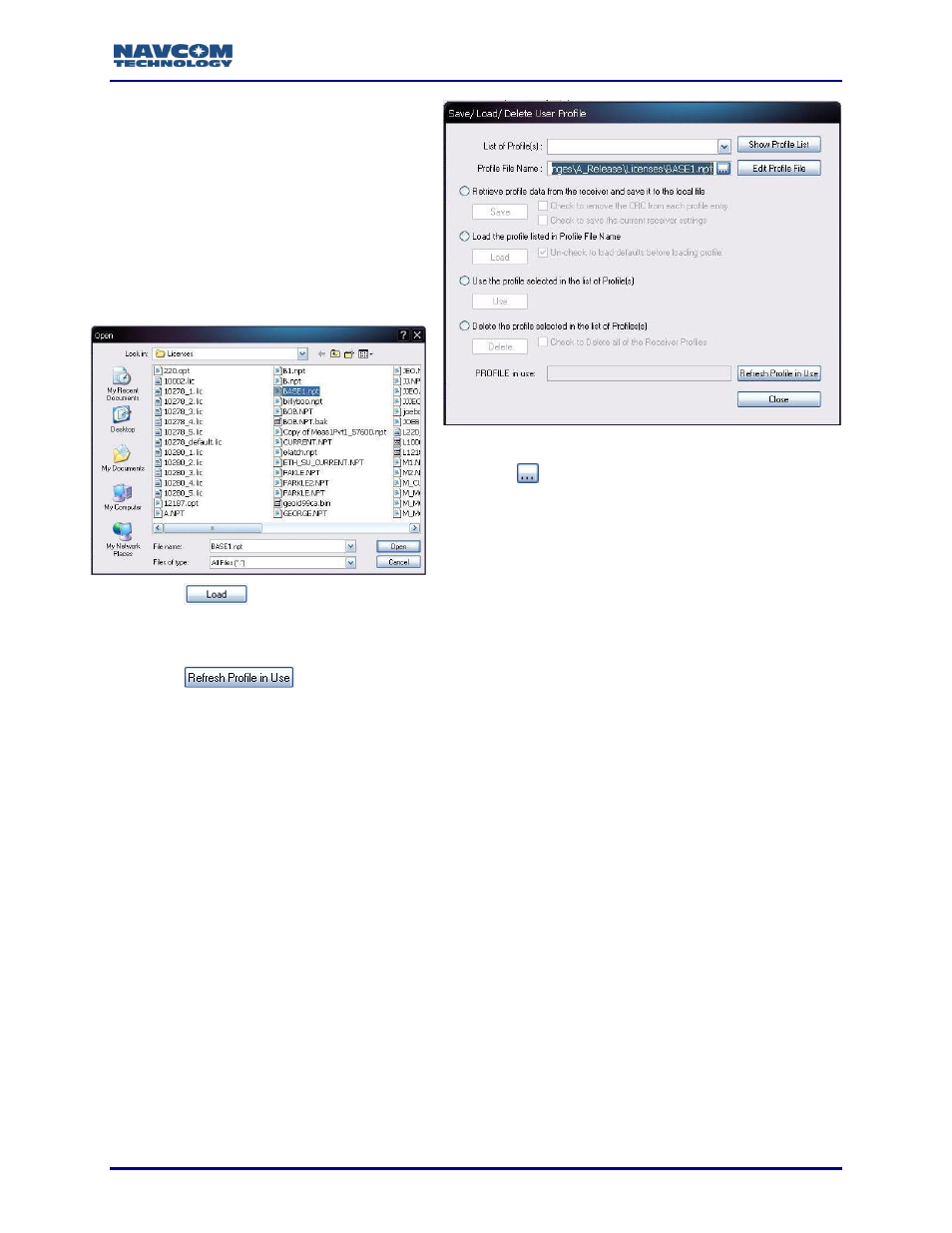Additional information, Automatic ethernet connection, Figure 17: network base – NavCom Sapphire Rev.J User Manual
Page 424: Sample.npt upload

Sapphire Technical Reference Manual Rev. J
424
Figure 17: Network Base
– Sample.npt Upload
4. Click
and locate the Network Base profile
just saved.
5. Select Load the profile listed in Profile File
Name; make sure the Un-check to load defaults
before loading profile is checked (as in Figure 17).
6. Click
to load the profile.
7. Review the Input Terminal window after the profile loads to ensure none of the command
was rejected.
8. Click
and the receiver will return the current loaded profile.
Additional Information
Automatic Ethernet Connection
The [ETHVCOM] command configures the Ethernet virtual COM port server application. It can
also be used to establish an EVCOM connection with a specific remote user or to terminate an
existing connection.
An Ethernet Virtual Com port (EVCOM) is similar to an ASYNC serial com port and supports the
same set of commands/responses as a serial COM port. It operates as a server to provide this
service to remote clients in a network environment such as a LAN or the Internet.
The data stream is encapsulated in IP packets and can be configured to use either the UDP or
TCP transport protocol. An IP packet may contain one or more complete message(s) or
response(s), a fragment of a message, or any combination. It is simply a stream of data that is
arbitrarily segmented into one or more UDP or TCP packets.
There are four logical ports that may be used by the EVCOM application (ETH1
– ETH4) for
scheduling messages or sending responses to received Nova commands. Each of the logical
ports can be individually configured for operation mode (TCP or UDP), IP port number,
scheduled messages, and remote endpoints (client applications) providing four independent
data streams.
